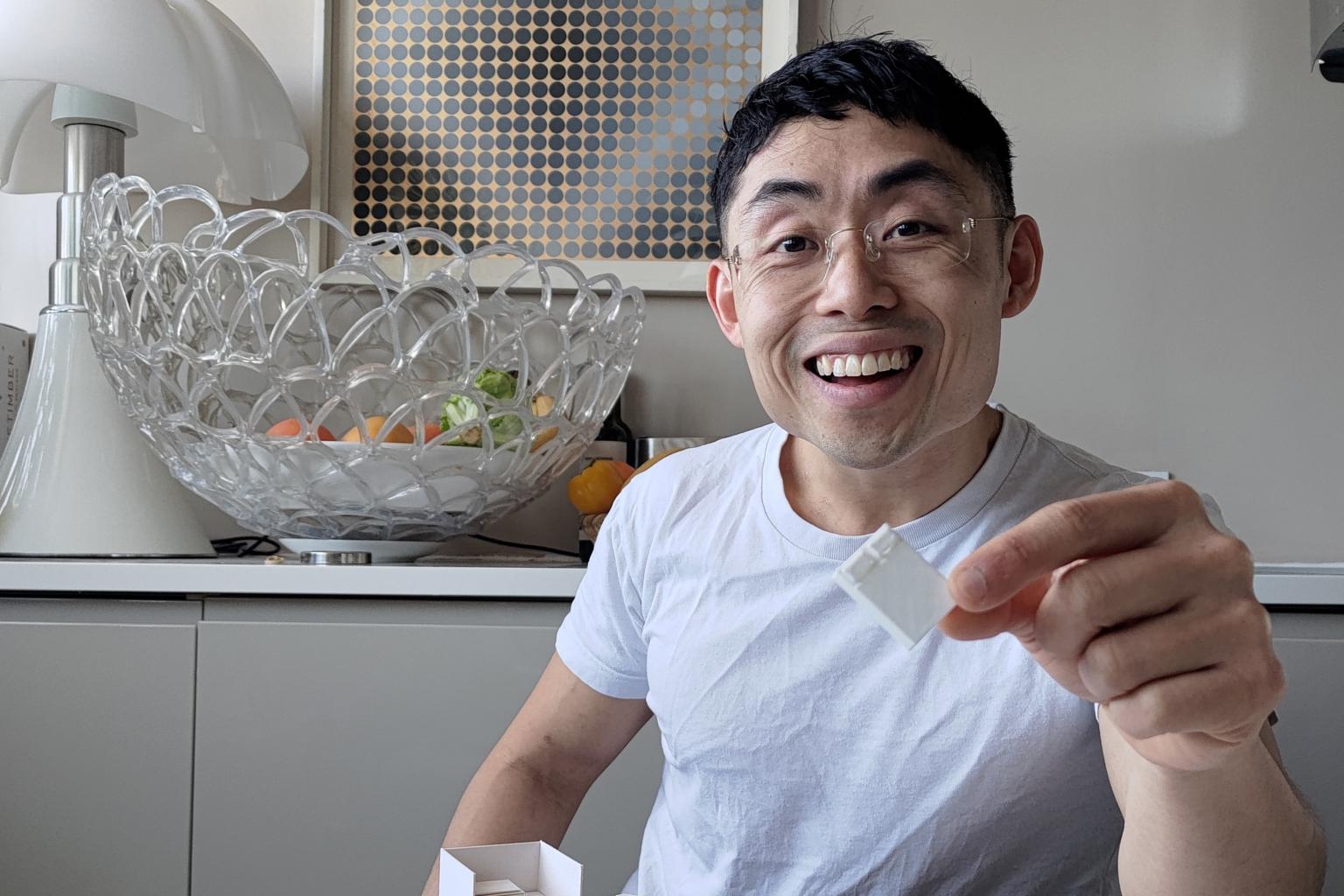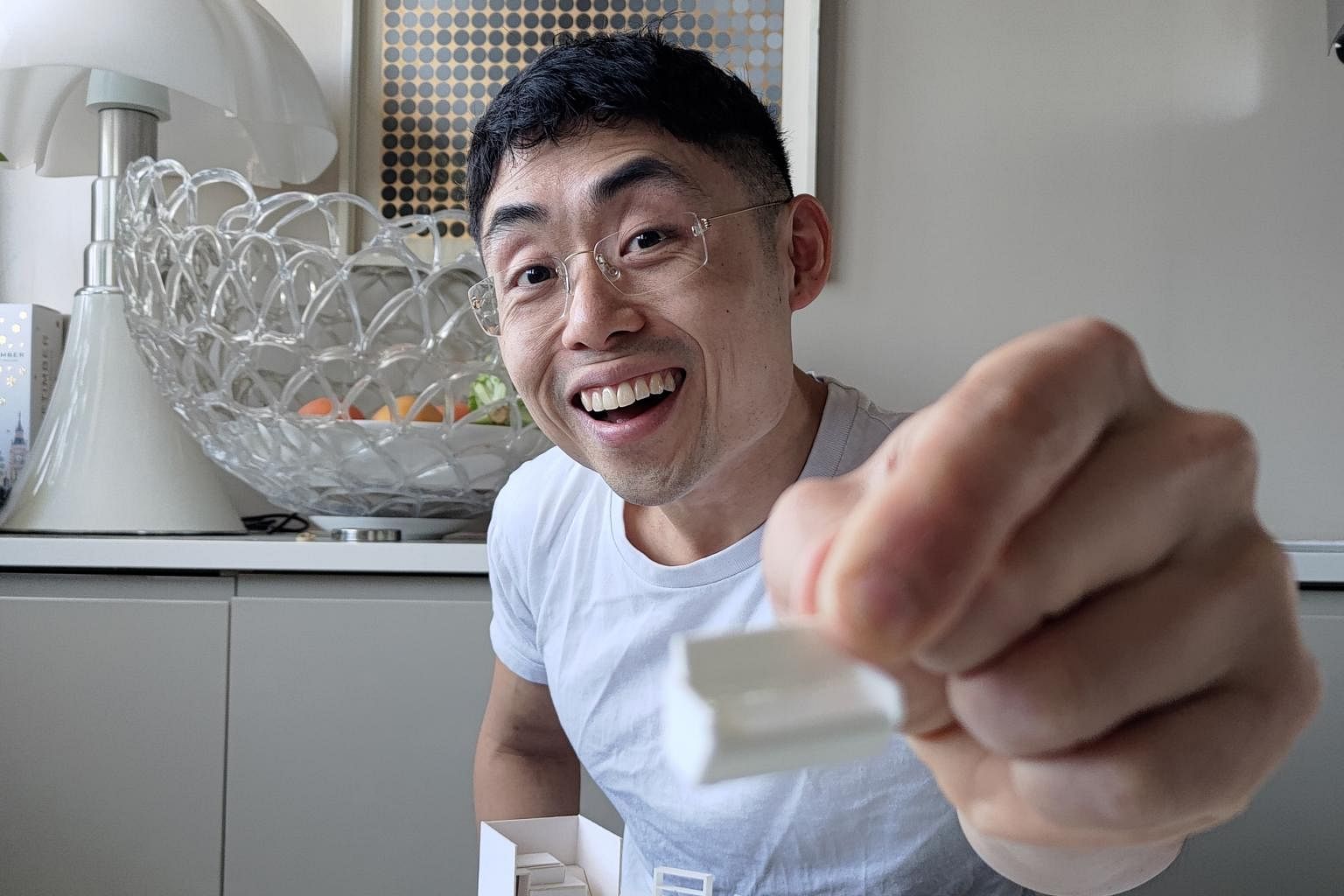The architect who gives interior design advice on TikTok
Sign up now: Get ST's newsletters delivered to your inbox

Architect Cliff Tan uses miniature 3D-printed furniture in his viral TikTok videos.
PHOTO: COURTESY OF CLIFF TAN
Follow topic:
SINGAPORE - When London-based Singaporean architect Cliff Tan hopped onto the TikTok bandwagon late last year, little did he know that he would be amassing more than 10 million likes in a matter of months.
Using miniature 3D-printed furniture he made as an architecture student at Singapore Polytechnic more than a decade ago, he created his very first design-related TikTok video during a two-week hotel quarantine in January this year. His handle on the platform is @dearmodern and he has 859,000 followers.
In the video, the 33-year-old skilfully moves a pocket-sized bed around a hand-drawn floor plan of a room, explaining the optimal bed placement using basic design and fengshui principles.
The 43-second video - hashtagged #fengshui and #interior design - has since garnered nearly seven million views.
Thrilled by the response to his video, Mr Tan spent his remaining days in quarantine packing more fengshui tips into short clips and has not stopped since.
Fengshui, or Chinese geomancy, is the practice of coordinating the interactions of people with, among other things, spaces and the environment to achieve harmony and balance.
Mr Tan, who is a graduate of the Architectural Association School of Architecture in London, says that much of his fengshui knowledge was passed down from his geomancer grandfather.
He also delved into the subject on his own, but has his own take on it.
"In architecture, there's this thing called 'site analysis' where we analyse the site and its condition before we start building.
"Fengshui is basically site analysis in a Chinese land. It's about how to optimise building and construction and placement," says Mr Tan, who runs his own architectural and space planning practice, Dear Modern.
He regularly mentions a "command position", which refers to the placement of a bed or desk in a spot farthest from and not in line with the door, and against a solid wall.
Though the philosophy behind the position rests on fengshui principles, Mr Tan says it is also about "sensibilities and common sense" as the placement is ideal for comfort and optimising space.
He is glad he has found a way and a channel to dispense his design expertise in an accessible way.
"I've always wanted to share about architecture because, personally, I feel it is reserved for the rich and privileged. Regular people seldom have access to an architect or get his or her services."
His content has also succeeded in creating an online community of design enthusiasts, many of whom provide a steady flow of inspiration for new videos in the comments section.
Some ask for help with unique room layouts - most interestingly, a circular bedroom - while others pose themes like "gothic room" as design challenges.
Even American singer Lizzo sought his advice over a room with a front door which goes straight through to the back door.
Mr Tan addressed it in a video reply with her song Juice playing in the background.
He started Dear Modern, whose clientele includes large corporations, in 2016 in London, where he lives with his partner.
Since discovering a new community online, he has modified his business model to focus more on the average Joes who may need expert design advice.
Young home owners and students struggling to make the most of tight dormitories are among those who have made bookings with him on his website after coming across his TikToks.
He charges £50 (S$94) for a 60- minute room consultation and £200 for a 90-minute home consultation, both of which include proposals for changes to the space layout.
He says: "TikTok made me realise that normal people need help too, yet it is impossible for them to have access to professional and experienced architects without their heavy contracts and costs."

The new approach is a welcome change for Mr Tan as more people are staying home and looking to modify their spaces for elevated comfort amid the pandemic.
In Singapore, where almost 80 per cent of the population live in Housing Board flats, space constraint is a common problem, especially with work-from-home arrangements.
While living and dining spaces may double as working areas, Mr Tan says it is necessary to carve out spaces in the home based on its use."You have to know the function of that room and focus on the function. It's about matching the use to the style."
For instance, one should avoid doing work in the bedroom - a place of rest - and instead enhance the room's sense of calm and stability with natural, earthy tones.
As for those who spend long hours at their desks, the command position may be worth employing for better focus as it provides the best visual control over the space.
Ultimately, Mr Tan ties the idea of harmonious living spaces back to optimised construction and designed placement of furniture and accessories. "Make the most of spaces," he says. "When you want good luck, it doesn't mean you just thoughtlessly do anything you can to get it. Most importantly, you have to get the flow and the feel right."

